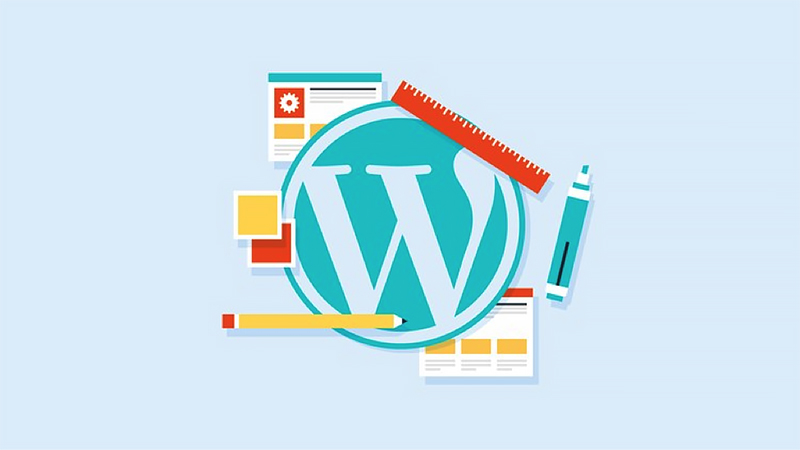Are you trying to create/edit a post in WordPress but don't know about all the post features you see on the screen? To some people, adding a new post is somewhat self-explanatory. However, many newbies find the interface to be quite overwhelming. If you're running a photography website, there are some WordPress edit post hacks that you should know about to take your photography website to the next level.
As a photographer, you want to
make sure that your content is SEO optimized before posting so it can reach your target audience. Also, one of the common mistakes photographers make in blogging is lacking focus on
content accuracy and readability. Let's help you learn how to make the best use of WordPress in just a few clicks, so you make no further mistakes!
Arrange Images for Optimum Viewing
WordPress, by default, adds photos in a vertical column on top of each other. This doesn't look very clean and will prompt your visitors to scroll more if you're adding multiple photos to a blog post. Therefore, you need to add images in both columns and rows. This requires less scrolling and creates an appealing look so that your visitors can view the pictures quickly.
Add a Concise Caption
Captions, such as URLs, can be crawled by Google. Anyone using keywords related with your caption will see your page listed in the search results. The trick is to maintain both page and image relevance. Adding captions will help make your posts more engaging and easier to understand for readers.
Captions under images are read 300% more than the body copy itself, said
Neil Patel. Leaving them blank is a missed opportunity in terms of user experience and SEO.
Fill In the Title
This field is attached to your images after you've uploaded them on your website. Consider using a short sentence or phrase to describe your image, including the relevant keywords you want search engines to see.
Include Alt-Text to Maximize Accessibility
The alt-text field allows you to provide visitors who are unable to access the images with a description of those images. Filling out alt-text accurately helps users understand your content. These descriptions also help to boost your content relevance as well as crawlers to understand your images better.
Create Proper Headings
People prefer a well-crafted article over a disorganized one. To properly arrange your article, consider creating a particular segment, and a specific heading to represent that segment. Most readers simply skim the content and pay more attention to the headings. And it's not just the readers; search engines also look for headings. Therefore, you need to arrange your content by using heading 1, 2, 3, or more to improve both readability and SEO.
Use Bullets
It's a proven fact that readers are more drawn to the bulleted list rather than long written paragraphs. You need to always keep the important information on your content under bullet points. For example, if your post contains animal facts, drug testing facts, photography facts, or any sort of facts, you need to ensure that the facts are displayed in bullets, so it's easier to locate and read. Just click on the Bulleted List option on the front line to create bullets in WordPress.
Write an Impressive Summary
WordPress allows you to create a summary (excerpt) of each post so that your visitors can easily understand what the content is about. Using excerpts will load your page faster because you'll only be loading a small portion of each article, and your archive pages won't get hit with a plagiarism penalty. To add a summary, simply place your cursor in the post editor and click the Insert Read More tag button.
Create an Effective Meta Description
The text snippets displayed in search engine results are called
Meta descriptions. They're the first thing a potential visitor will notice. Therefore, optimizing Meta will help you grab their attention and provide important information to the search engine itself. You can add a brief description to one of your photography blogs, but make sure it's under 300 characters. Otherwise, it'll turn out to be valueless.
Use Horizontal Line
This may seem irrelevant to you, but it's just as important as adding headings to your content. Consider placing a horizontal line below each of your headings to make them more visible to readers.
Add Category
Adding category means allowing your visitors to get a preview of your content, so they can easily understand what type of photography blog is presented on the inside. On top of that, adding a category will enable search engines to easily detect your content if their searching category matches with yours.
Set Focus Keyword
This refers to the focused topic that you've highlighted in your post. When you set the focus keyword in the box, WordPress will display the density of it. This way you can modify the keyword density according to the report given by WordPress.
Add Related Keywords
Apart from setting a focus keyword, don't forget to add some more related keywords to your content. Remember,
repeating your exact focus keyword often impairs readability. Consider using synonyms to help readers understand your copy better. In fact, search engines will also recognize these synonyms. So, it's a win-win for you.
Set Featured Image
Adding a featured image is crucial, especially for a photography website. It represents your content and draws the attention of your visitors. To add a featured image, click on the
Set featured image button. You can either choose one from your existing list or upload a new one.
Insert Video
Videos bring life to your website. They are also a great way to boost user engagement. WordPress features
auto-embeds, which allows your site to automatically get the embed code from popular video hosting services, such as YouTube, Vimeo, etc. Simply paste the video URL into the Editor, and you're good to go!
Include Internal Links
You must insert specific
internal links into a post to rank. Google finds your content best when it's linked to from somewhere on the web. Internal links also connect your content and give search engines an idea of your website's structure. Therefore, using the proper internal linking strategy can increase your SEO!
Add Relevant Tags
Tags are essential for your WordPress site as they help organize your blog's content. They also help readers find their way around your website more easily. To add a tag, go to the
Tags field on the right, type in the tag word, and click
Add. You can add multiple tags to a new post, but make sure they're relevant to the content.
Check The Preview
Finally, when you're done writing, don't publish it right away. Instead, take a quick preview of your article by using the
Submit for review option. This way you can countercheck the content. If it seems right from a reader's perspective, hit
publish.
Wrapping Up
These were some of the nifty Edit Post hacks for photographers. We believe making the best use of each of these hacks will help you create the best content for your photography website as well as boost your SEO.
Speaking of which, here's a bonus SEO tip for you:
Use Yoast SEO plugin for your photography website. It's the most widely recognized SEO plugin for WordPress. If you want to rank your images, Yoast is where you should be.
Did you find this article helpful? Share your thoughts with us in the comments below. You can also bookmark this list for future references.
All about Mary Walton
Mary Walton is a professional editor, content strategist and a part of
NCSM team. Apart from writing, Mary is passionate about hiking and gaming. Feel free to contact her via
Facebook.


